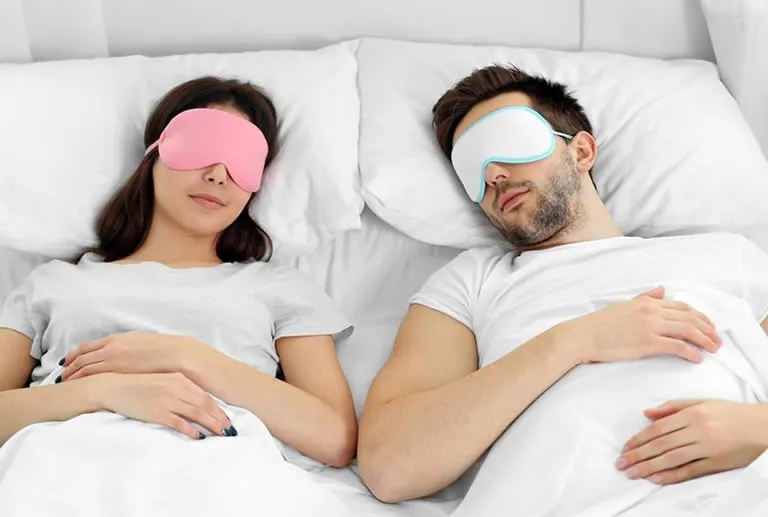We all have thoughts about sex at some point in our lives. In addition to fantasizing about sex, many people also have these thoughts. Some people have lucid erotic dreams that they can influence.
Lucid sex dreams: everything you need to know.
Three reasons behind sexual dreams
Sexual desire is a multifaceted emotion that can be elicited by a wide range of stimuli. The same is true for sex dreams, which can be triggered by a variety of different things.
Understanding what makes you want to have sex, what you enjoy doing when having sex, and how to get stronger orgasms are all things you can learn through studying your own sexuality and wants.
Having dreams is a fundamental aspect of our daily lives. It is possible to experience both physical and emotional sensations during a dream. Although the exact function of dreams has not been determined, some individuals feel that dreams can reveal something about a person’s conscious thoughts. Our emotions, worries, memories, and learning can all be better managed through the power of dreams.
To be honest, waking up from a sex dream involving someone you don’t find particularly attractive might be a bit perplexing. Dreaming about someone who isn’t your partner while in a committed relationship is quite acceptable. It’s important to remember that having these kinds of dreams does not necessarily indicate that something is wrong in your relationship or that you’re attracted to someone else.

Being unsatisfied with your sex life
One probable reason for having sexual dreams is if you are dissatisfied with your sex life right now. As a result of an inactive or unpleasant sex life, many people have sexual fantasies that they would like to fulfill.
Dreams might be a technique for your brain to cope with sexual frustration if you find yourself in this circumstance. If this sounds familiar, it’s probably because your brain is attempting to relieve some of your stress through bodily reactions.
Feeling attracted to someone
Erotic dreams can occur as a result of being attracted to someone on an emotional or bodily level. Even if you’re not in a romantic relationship, you can have sexual excitement.
According to Sigmund Freud, dreams are the result of our minds attempting to fulfill desires. In his opinion, this is why we have sexual fantasies about another person, even if we don’t know them personally, even if we find them attractive (such as a celebrity).
Being interested in or admiring another person
Even if you aren’t sexually attracted to someone, you can still have sex dreams about them. Having sex fantasies about someone you’re not attracted to is perfectly natural, and it’s not something to be ashamed of. Even if you have sexual fantasies about someone, it doesn’t guarantee you’re interested in exploring a romantic relationship with them. Our erotic dreams aren’t necessarily linked to our actual sexual urges, and in some cases, they have nothing to do with sex at all.
How to have sexual dreams
Orgasms while sleeping have been recorded by a large number of persons. If you’re having a sex dream, you may feel excitement in your lower body without waking up. You can also be woken up by the sensations of sexual excitement and orgasm that occur while you’re asleep.
If you want to produce sexual dreams, there are a few things you may do. These methods may assist you in having more frequent sex dreams.
Visualize your ideal erotic dream or partner
The night before you go to sleep, envision yourself in your perfect sex fantasy. Consider a companion who arouses your sexual desire, whether that person is someone you’re dating or someone you’re not.
Think about what you hope to accomplish in the future with that individual. Kissing, massage, and intercourse are all examples of sexual activities that can be used as examples of this type of action. Make a mental picture of the circumstances that could lead to this meeting and how you would like it to proceed. Orgasmic meditation can also boost your sexual arousal before bedtime.
In your imagination, you can also masturbate by touching your nipples or other private regions of your body. Before you go to sleep, you can use this to raise your arousal levels and set yourself in the mood for a sexual dream.
Create your perfect sex dream setup
Inducing sex fantasies might be as simple as setting up a sultry atmosphere. You may find it difficult to feel sexual if your surroundings aren’t particularly enticing. Even though you can’t make the perfect bedroom every day, even modest alterations can help you feel more seductive before you go to sleep.
Here are some ideas to help you create the ideal setting for a sex fantasy in your bedroom:
- Put on your sexiest pajamas or lingerie before going to sleep. Make certain that they aren’t going to interfere with your sleep and that you are comfortable wearing them. Wear nothing if it helps you feel more attractive.
- Refresh your bed with new, softer linens by switching out your old ones. It’s hard to beat the feeling of sleeping on freshly laundered sheets.
- Before you go to sleep, put on some soothing music.
- If you’re having difficulties conjuring up your own sexual fantasies, try reading an erotic novel.
- Clutter might make you feel uneasy and detract from erotic fantasies, so keep your bedroom tidy to avoid this.
- Spray a pleasant aroma on your pillows or light a scented candle to engage your sense of smell before going to bed (but don’t forget to blow it out!).
Keep a diary of your erotic fantasies
Writing down all your sex thoughts, ideas and dreams might improve your sex life tremendously. When you write these things down, you’ll be able to remember them better.
In order to become more aware of your sexual needs, it is a good idea to keep a sexual notebook. If you want to replay a fantasy or express your wishes to a partner, this is a useful skill to have.
To improve your sex life or masturbation techniques, you can utilize this notebook even when it isn’t being used to elicit sex fantasies. You’ll be able to spot patterns and figure out what gives you the most pleasure if you keep a list of the things you appreciate.
What is a lucid dream?
Basic dreams must be explored before we can go to the fascinating world of lucid dreaming (i.e., the Lizzo of sleep) (i.e., the Lauren Conrad of sleep).
Despite the fact that sleep is necessary for the body to repair itself, the purpose of dreams remains a mystery. There is no scientific proof that humans dream, but there are some plausible suggestions as to why we do so.
Some neuroscientists believe that dreams are a means for our brains to sort through the information they get throughout the day and arrive at a deeper understanding of the world around us. Some people think that dreams are an important aspect of how memories are stored in the brain.
You get an odd dream about cutting hair at a fish market as your brain struggles to remember all the things that transpired during the day.
You may also use dreams to comprehend and analyze your feelings more thoroughly. Or perhaps you’ve been haunted by Jonathan Taylor Thomas’s death and can’t stop thinking about it.
The JTT phenomenon has not been investigated by scientists, but there are emerging studies showing that dreams are a significant element of our high-level cognition and emotional lives.
Lucid dreaming occurs when you recognize that you are dreaming while you are dreaming. Lucid dreamers have the ability to exert control over their behavior.
Instead than feeling humiliated in front of your high school crush because you’re taking your SATs bare-legged, you just accept the dream and put on some imagined trousers.

Do lucid sex dreams exist?
To be lucid in a dream means to be fully aware of the fact that you are actually dreaming. During a lucid dream, you have some degree of control over the people, setting, and events that take place in the dream.
Lucid dreaming has been around for a long time. This behavior has been seen for a very long time, in the thousands of years range. In fact, it wasn’t until roughly 30 years ago that experts were able to scientifically confirm the reality of lucid dreams. There is still a great deal unknown regarding lucid dreams, including those that are sexual in nature.
Rapid eye movement (REM) sleep is the most common stage of sleep in which lucid dreams occur. It is possible to have lucid dreams while you are not in the REM stage of sleep.
Lucid sex dreams can be as stimulating as real-life sex, according to those who have experienced them. Some dreamers like scenarios in their dreams that they wouldn’t necessarily want to experience in real life despite the fact that the sensations might be very genuine in a lucid erotic dream.
If you’re looking for a way to produce lucid sex dreams, you should keep in mind that there isn’t enough data to support the often advocated ways. If these erotic dream strategies don’t work for you, don’t worry.
As long as you don’t damage yourself by attempting to produce these kinds of dreams, you’ll be fine. As even if they don’t have any effect on your sex life, they can still help you discover and understand your sexuality and desires. A terrific method to spice up your sexual life, they may actually work as described.
How does lucid dreaming work?
At night, your brain continues to function. Researchers don’t know exactly what your brain does while you sleep, but studies show busy patterns of brain waves all night long.
Four stages of sleep are involved in the process of falling asleep.
Only a few minutes in length, Stage 1 transitions you from a state of wakefulness to a state of sleepiness. As your heart rate and muscles relax, you drift off to a light slumber in Stage 2. You’ll wake up feeling rested after completing Stage 3 (deep sleep).
However, the fourth stage, REM, is the most enjoyable one.
As your heart rate rises and your eyes move around during rapid eye movement sleep (REM sleep), your brain becomes almost as busy during the daytime.
In this state of brain activity, most dreams and lucid dreams take place. Even if you’ve completed puberty, you’re unlikely to have a wet dream during the REM stage.
There is no evidence that lucid dreams are more vivid than non-lucid ones. The exhilaration of lucid dreaming comes from the fact that you’ve taken control of a fictional universe.
Alternatively, it can help alleviate reoccurring nightmares by reducing tension, worry, and dread. Lucid dreaming, like regular dreams, varies from person to person and night to night.
Lucid dreams do not include dreams that are so vivid that the narrator is able to walk out of the dream. Mainly due to the fact that you aren’t conscious of the dream as it occurs. Different from hypnagogic hallucinations (when you have auditory or visual hallucinations while falling asleep), they are also distinct.
Lucid dreams are reported by 23% of people as occurring at least once a month, with 55% reporting at least one in their lifetime.
Repetitive nightmares can be alleviated by the use of lucid dreaming. Practicing motor abilities in a lucid dream has been shown to improve those skills in waking life.
Tips for achieving lucidity in dreams
There have been few studies on the subject of lucid dreaming. There is some evidence that lucid dreaming is real, according to Stephen LaBarge, who has been at the forefront of lucid dreaming research.
During a sleep study, individuals were able to signal when they reached a particular level of consciousness. A number of people were able to display these signs, indicating that they were aware when asleep.
During lucidity, brainwaves were discovered to be a mix of waking and dreaming brainwaves, according to researchers in 2009. Despite the small sample size, the majority of researchers believe that lucid dreaming is a real phenomenon.
There are even less research on how to lucid dream, which is unfortunate. There are, however, a few techniques that may help you achieve your goal of controlling your dreams.
Getting more sleep
Getting more REM sleep is the best strategy for achieving lucid dreaming. Unfortunately, listening to “Automatic for the People” isn’t going to do the trick. To improve your REM sleep, you’ll need to sleep more hours per night as a whole.
In order to achieve this, make sure you’re getting enough sleep at night.
Sleep and eat at around the same times each day. The temperature and lighting in your bedroom should be ideal. Construction sites and insomniac opera singers should be avoided at all costs. The essentials, as you can see.
Daydream about dreaming
To induce lucid dreaming, LaBerge devised a slew of methods. Dreaming a much and becoming more aware of the world around you are two of the most common ways to do this.
You’re more likely to recognize a dream when you’re asleep if you think about it all day.
‘Reality testing,’ too, follows the same rationale. Some commonplace items or tasks take on a bizarre appearance in dreams. Look at a digital clock or a book, for example, in your dreams. The words or numbers are more likely to be strange symbols that shift every time you look at them.
Unfortunately, this potential lucidity trigger is squandered because we don’t think to glance at digital clocks and books in our dreams. That’s why lucid dreaming proponents advocate performing “reality checks” when awake.
Remind yourself to read the words on the page or the time on the clock twenty times a day. Keep an eye on the clock and don’t just assume you’re awake. This is supposed to happen naturally in your sleep, and you’ll be able to tell right away if you’re dreaming or not.
As a result of this increased awareness of dreams, keeping a dream notebook helps.
The best way to remember your dreams is to write them down in full. Keep a pen and paper by your bedside since even the most bizarre dreams fade quickly.
Get MILD
Before you go to bed, use the MILD (Mnemonic induction of lucid dreams) approach to begin inducing lucid dreams.
Think of a “dreamsign,” which is anything odd that occurs frequently in your dreams, to assist you in this process (like flying). Think about this dreamsign and promise yourself that you will recall your next dream as you drift off to sleep.
While the dreamsign serves as a reminder that you are in a dream, your brain is primed to recognize that you are dreaming because of this increased awareness of dreaming.
In a tiny 2017 investigation, this strategy was shown to be the most effective by LaBerge.
Wake up to dream
You can use the Wake Back to Bed approach, which is one of the most frustrating lucid dreaming methods (WBTB).
After you’ve gone to bed, set an alarm for 5 hours later. Go back to sleep after a half-hour of snoozing. This improves your chances of experiencing lucid dreaming during rapid eye movement (REM) sleep.
Wear a light-up mask
Several lucid dream masks have appeared on crowdfunding websites in recent years.
There are small lights around the eyes that appear like night masks. The mask flashes the lights as you enter REM sleep to tell you that you’re dreaming. Have you ever thought about flying?”
NovaDreamer, a mask designed by LaBerge, worked on 11 out of the 14 patients he tested. After being on the market for several years, the mask went out of production in 2004, and even though NovaDreamer 2.0 has been announced, it is only a dream.
However, there is no indication that these masks are effective.
Take galantamine
An investigation conducted in 2018 indicated that the drug galantamine, which is commonly prescribed to treat the signs and symptoms of Alzheimer’s disease, may help people experience more vivid dreams.
Moreover, in this study, all of the LaBerge lucid dreaming techniques (such as waking up five hours after going to bed) and a dose of the drug were also performed by the subjects.
It’s not certain if taking galantamine for the sake of dreaming will have any negative side effects or if it will work as advertised.
A doctor should always be consulted before attempting something like this, but it is a fascinating study that may lead to further information on lucid dreaming in the near future..
There is no secret to lucid dreaming in the grand scheme of things. Some people may be able to achieve it, and others may be unable to. However, keeping a dream journal, paying attention to your thoughts, and getting more sleep can’t harm.
So, if you’d like to experiment with these methods for influencing your dreams, feel free! Because there is no known method of achieving lucid dreaming, avoid taking advice from anyone who claims to have the answer.



















